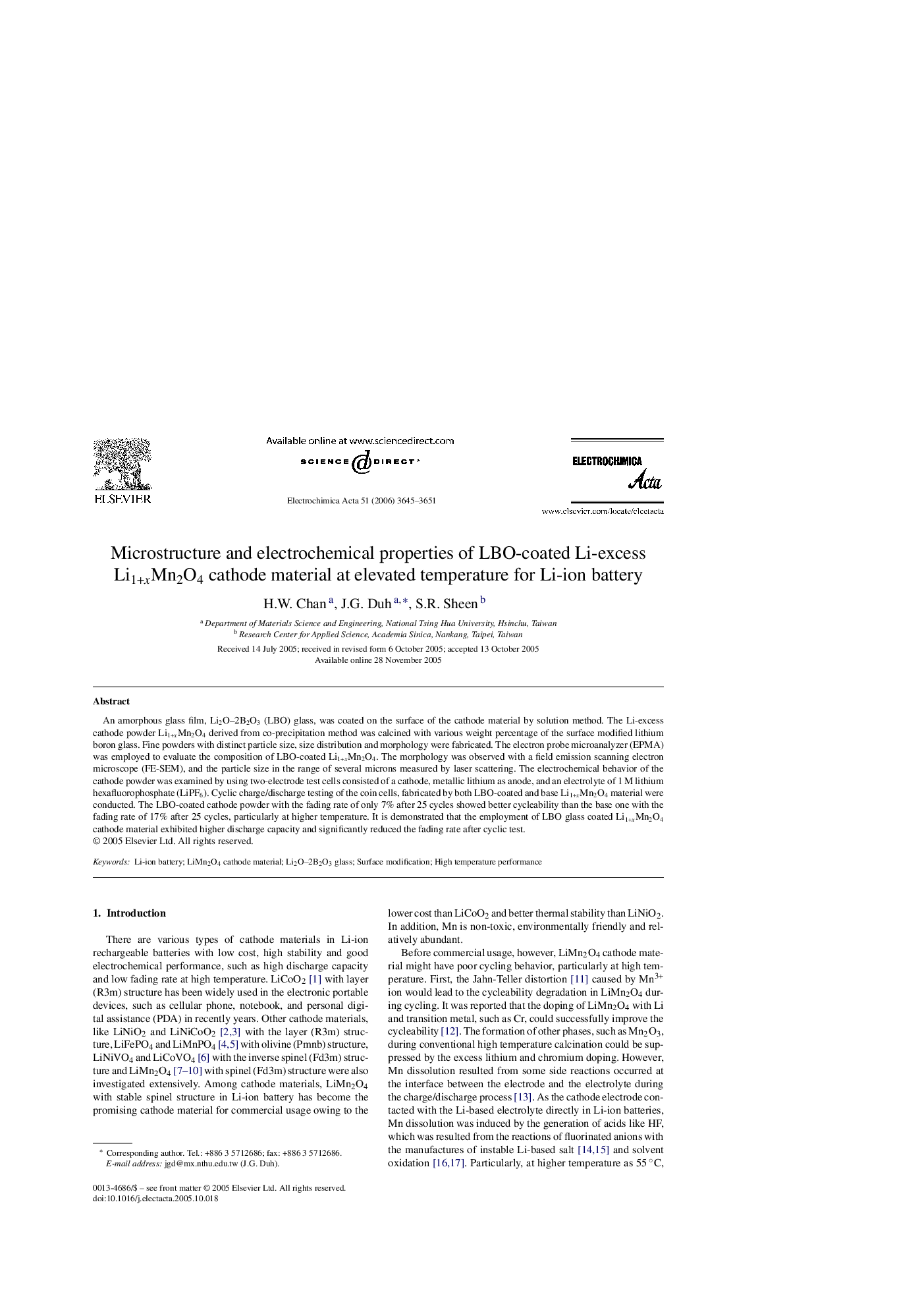| Article ID | Journal | Published Year | Pages | File Type |
|---|---|---|---|---|
| 195841 | Electrochimica Acta | 2006 | 7 Pages |
An amorphous glass film, Li2O–2B2O3 (LBO) glass, was coated on the surface of the cathode material by solution method. The Li-excess cathode powder Li1+xMn2O4 derived from co-precipitation method was calcined with various weight percentage of the surface modified lithium boron glass. Fine powders with distinct particle size, size distribution and morphology were fabricated. The electron probe microanalyzer (EPMA) was employed to evaluate the composition of LBO-coated Li1+xMn2O4. The morphology was observed with a field emission scanning electron microscope (FE-SEM), and the particle size in the range of several microns measured by laser scattering. The electrochemical behavior of the cathode powder was examined by using two-electrode test cells consisted of a cathode, metallic lithium as anode, and an electrolyte of 1 M lithium hexafluorophosphate (LiPF6). Cyclic charge/discharge testing of the coin cells, fabricated by both LBO-coated and base Li1+xMn2O4 material were conducted. The LBO-coated cathode powder with the fading rate of only 7% after 25 cycles showed better cycleability than the base one with the fading rate of 17% after 25 cycles, particularly at higher temperature. It is demonstrated that the employment of LBO glass coated Li1+xMn2O4 cathode material exhibited higher discharge capacity and significantly reduced the fading rate after cyclic test.
